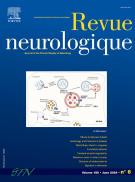Artificial intelligence applied to electroencephalography in epilepsy - 30/03/25

Abstract |
Artificial intelligence (AI) is progressively transforming all fields of medicine, promising substantial changes in clinical practice. In the context of epilepsy, electroencephalography (EEG), a technique used for over a century, has historically been resistant to automated analysis due to the complexity of the signals and the challenges posed by artifact management. While the human eye excels at recognizing patterns, algorithms have demonstrated superior capabilities in detecting and characterizing specific features, such as long-term dynamics and synchrony. Furthermore, the advent of wearable EEG devices has led to an exponential increase in data volume, surpassing the limits of visual interpretation. AI algorithms are now being developed to address these limitations, offering enhanced efficiency in both identifying subtle signal features and managing massive datasets. This review explores the fundamental principles of AI and its transformative potential in the field of EEG. It discusses the implications and the current limitations, including improvements limited to aggregation of already known knowledge, for epilepsy diagnosis, medical and surgical treatment, and innovative approaches to patient monitoring, including seizure forecasting, highlighting how AI is poised to redefine the management of epilepsy.
Le texte complet de cet article est disponible en PDF.Keywords : Epilepsy, EEG, Artificial intelligence, Surgery, Seizure prediction
Plan
Bienvenue sur EM-consulte, la référence des professionnels de santé.
L’accès au texte intégral de cet article nécessite un abonnement.
Déjà abonné à cette revue ?

